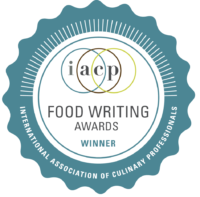Another Mediterranean cuisine? Well, yes and no. One blog entry could never do justice to what is considered Israeli cuisine. While Israel is seated on the eastern edge of the Mediterranean, generations of Jews scattered across the globe and returning home again have brought back layer upon layer of culinary influence.
Itzik Hagadol in Encino is a sister restaurant to one by the same name located in Tel Aviv, so we didn’t question its authenticity (the only difference in the two menus is that the restaurant in Israel offers more selections of offal). The menu is decidedly Mediterranean and strongly Sephardic (lots of ground meat), with the occasional Ashkenazi touch (they serve potatoes instead of rice). Himself and I strolled in, ordered an appetizer and a couple of entrées and ended up with a table full of dishes. (It reminded us a bit of our first visit to a Korean restaurant, when we ordered two entrées and ended up with 21 tiny dishes on our table!). The spread was generous and flavorful.
These portobello mushrooms were marinated before hitting the grill alongside the tomatoes and pearl onions. They’re the most luscious mushrooms I’ve ever savored. They looked just like slices of fatty meat and were smoky yet creamy smooth.
The red purée at the top left is matbucha, a.k.a. Turkish salad, a tomato and roasted red pepper dip that is similar to muhammara but without the walnuts. We tore off pieces of our laffa and dredged them in this one and in the one at the top right, a grilled eggplant salad called salat ḥatzilim. Both dips were incredibly rich and loaded with smoky, spicy flavors. In the middle is a roasted potato; the other dishes contain pickled cabbage (zingy), red cabbage mixed with mayonnaise (mild), and a house-made salsa, a concession to our Southern California locale, I suppose. This assortment of salads ran the gamut of flavors and was a great accompaniments to our kababs.
I ordered the house kabab, a combination of ground veal and lamb. The meat was creamy smooth and delicately flavored. It was served with hummus and Israeli salad or salat aravi, a mixture of just about every vegetable you can name, tossed with olive oil and lemon juice. That pool in the middle of the hummus is tahini mixed with olive oil and finely chopped parsley. Yes, we did a lot of laffa dredging.
Rosewater is one of the best things to ever happen to food, and malabi showcases it beautifully. For dessert we shared this vanilla custard topped with rosewater, ground pistachios, coconut and cardamom, a combination that was curiously both rich and light. I must figure out how to make this. It’s a dessert I could definitely cozy up to.
I know that the next Israeli meal we run across could look absolutely nothing like the one we just had. But that’s part of the fun of exploring the world’s cuisines. Nothing is as cut-and-dried, as easily definable as we’d like to make it. There’s always something new to sample and learn, and I get a kick out of seeing history in action as people carry their foods and cooking methods with them–and how they adopt new foods and cooking methods and bring them back home.















